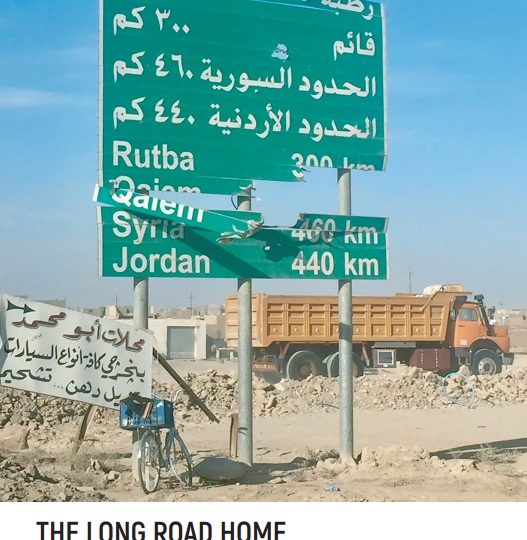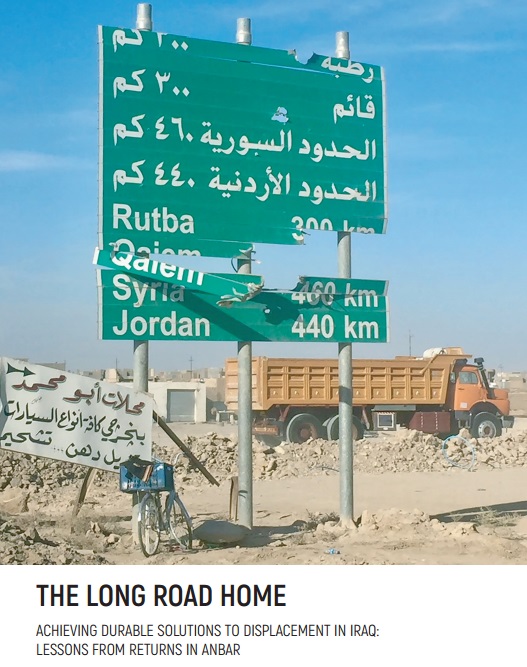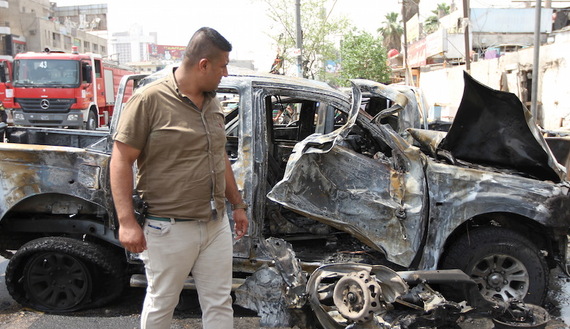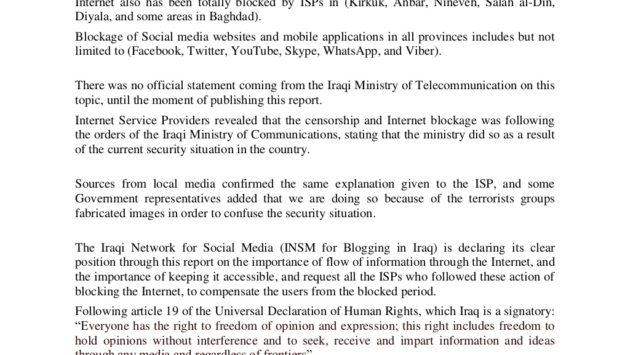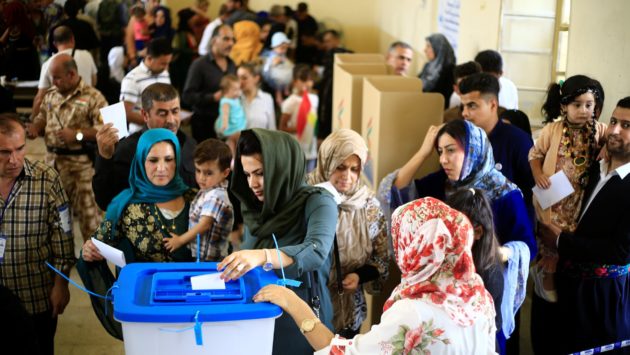The Long Road Home: Achieving durable solutions to displacement in Iraq – lessons from returns in Anbar
Report from: Danish Refugee Council, Norwegian Refugee Council, International Rescue Committee.
(To download the full version of the report click here)
In December 2017, after three years of conflict which displaced 5.8 million people, Iraqi Prime Minister Haidar Al-Abadi declared victory over the Islamic State group (ISIS). As Coalition-backed Iraqi forces slowly regained territory, many people returned home to start the long process of rebuilding their lives and communities.
By the end of 2017, the number of people returning to the areas from which they had fled surpassed the number of those displaced by the conflict for the first time since it began. Over 3.3 million Iraqis have returned, the majority to areas within Anbar, Ninewa, and Salah al-Din governorates. The remaining 2.5 million are still waiting for a solution to their displacement.1 Behind these figures, however, lies a complex narrative that tells of the struggles families face as they seek out sustainable solutions to their displacement. From the experience of Danish Refugee Council (DRC),
International Rescue Committee (IRC), and Norwegian Refugee Council (NRC) in Anbar, it is clear that many of the returns taking place are premature and do not meet international standards of safety, dignity, and voluntariness.
Lack of information, poor conditions in camps, restrictions on freedom of movement, and the promise of incentives prompt some displaced families to leave camps prematurely despite the risks. Others are not allowed to choose, they have been coerced or forced to return against their will.
Some have been blocked from returning, or evicted and displaced once more when they finally return to their areas of origin. These practices may amount to collective punishment perpetrated against people with real or perceived links to ISIS.
The situation is further complicated by the fact that many of these returns are unsustainable, as the security and habitability of some areas retaken by Iraqi authorities are not conducive to a permanent return for all people. As the number of premature returns increases, so too does the number of people pushed into secondary displacement.
The portion of people remaining in displacement who do not intend to return home is growing. A national survey conducted in January 2018 recorded 52% of internally displaced people in camps across Iraq do not currently plan to return.2 Without alternative solutions for those unable or unwilling to return, these families are likely to remain in protracted displacement.
Key Findings
This report traces the challenges that families face as they attempt to return home. Quantitative and qualitative data collected in Anbar from November 2017 to January 2018, demonstrate that:
• 84% of displaced Iraqis in Amriyat Al-Fallujah (AAF) and Bezabize camps reported feeling safer in their current camp locations than in their area of origin, 62% of them did not think aid would be available back home, and only 1% reported knowing that their houses were available for return, demonstrating the persisting insecurity, destruction, and lack of services in retaken areas.
• 38% of respondents in AAF and Bezabize reported that they were not presently planning on returning home.
• Of the 56% who said they eventually planned to return, 50% cited emotional obligation, 20% cited limited livelihood opportunities in displacement, and 20% cited limited basic services in the camps as motivating factors for their return, indicating some of the push and pull factors encouraging premature returns.
• Coerced and forced returns sharply increased in the final months of 2017. In Habbaniya Tourist City (HTC), AAF, and Kilo 18 camps alone, roughly 8,700 people are estimated to have been evicted and forcibly returned to their areas of origin during November and December.
• 16% of internally displaced persons (IDPs) surveyed reported that their attempts to return to their area of origin had been blocked. This is mirrored by an International Organization for Migration (IOM) survey of IDPs’ obstacles to return, which indicated that 23% of displaced Iraqis across the country reported that their attempted returns had been blocked by security actors.
• An estimated one in five of people evicted from Kilo 18 camp in Anbar in December returned to the camp after facing retribution and threats in their areas of origin, indicating the potential caseload of people unable to permanently return. Mosul camp returnee monitoring data provides corroborating evidence, with recent data showing 10% of attempted returnees ending up back in camps and 25% of the remainder in secondary displacement.33 Key Recommendations Based on these findings, the report provides recommendations to prevent premature returns and promote safe, voluntary, dignified, and durable solutions to displacement across Iraq. Among the recommendations are:
Government of Iraq representatives should:
• Ensure Iraq’s National Policy on Displacement introduced in 2008 is effectively passed into law and implemented across all governorates.
• Uphold the right of IDPs to remain in their current location of displacement, and ensure actors at all levels of authority implement high-level directives banning coerced, forced, and blocked returns.
• End restrictions that deprive displaced Iraqis and returnees of freedom of movement, including practices such as civil documentation confiscation.
Humanitarian agencies, including the UN and NGOs, should:
• Develop a principled framework to ensure that assistance in retaken areas does not incentivize premature, involuntary, or unsafe returns. Humanitarian leadership should develop a risk mitigation strategy for the provision of minimum assistance packages.
• Scale up multi-sectoral assessments and areabased humanitarian coordination in areas of return to facilitate increased access to assistance and services.
The international community, including donor governments and members of the global coalition against ISIS, should:
• Require the Government of Iraq to establish indicators to operationalize commitments to voluntary and sustainable displacement solutions as a part of bilateral and multilateral assistance commitments.
• Engage with and support the Government of Iraq to determine the number of IDPs who are unable or unwilling to return home and develop a plan to ensure their ability to access durable solutions, in line with Iraq’s National Policy on Displacement.

